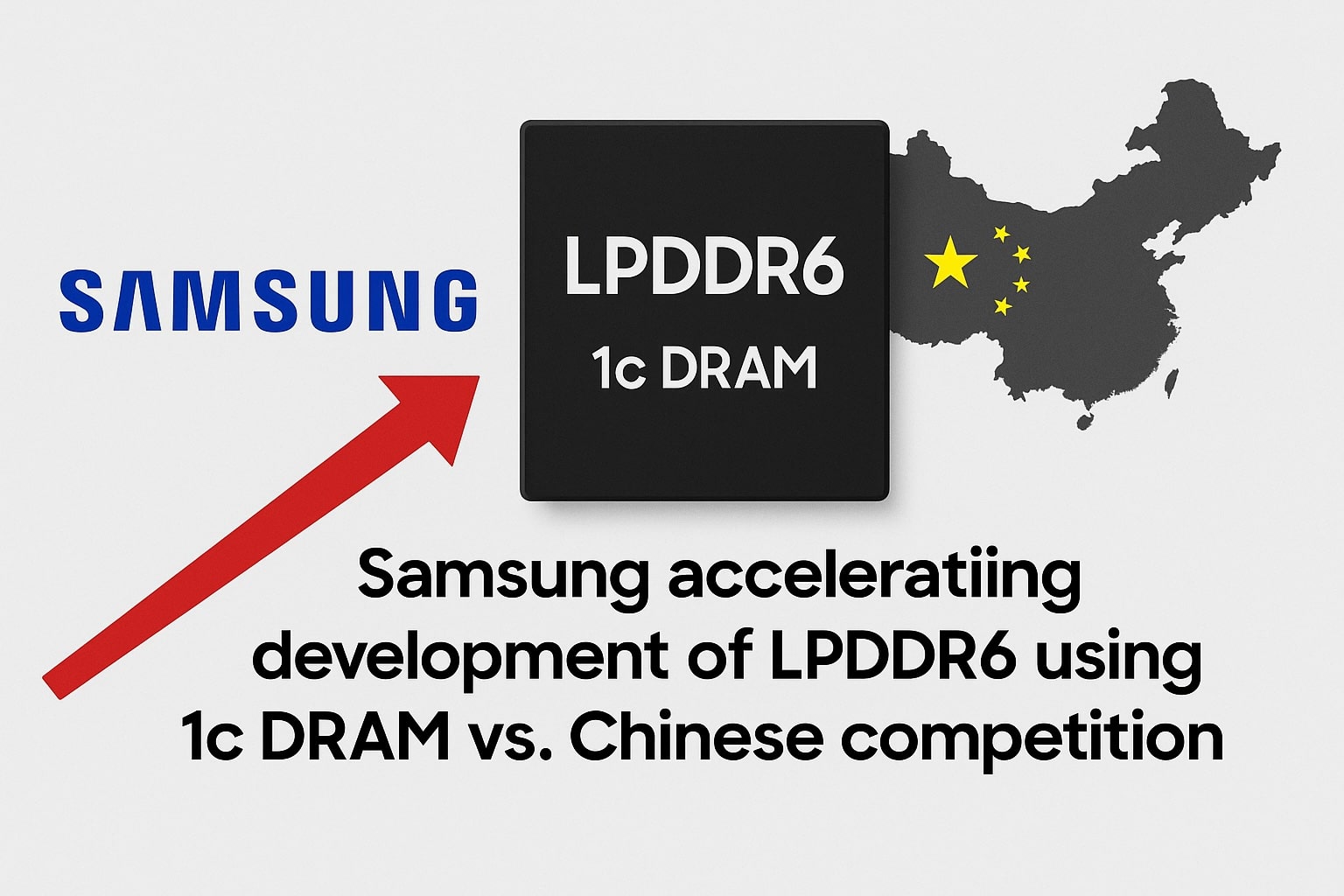Samsung Electronics has accelerated the development of its next generation of low-power LPDDR6 memory. Reports indicate that the South Korean company will begin mass production of these chips in the second half of 2025 using its advanced sixth-generation ‘1c DRAM’ technology. This strategic move aims to solidify its leadership amidst growing competition from Chinese manufacturers like ChangXin Memory Technologies (CXMT), which has gained ground in recent years.
According to South Korean media, CXMT has already completed the development of LPDDR5X chips and has started preliminary work on LPDDR6, aiming for large-scale production in 2026. Samsung, for its part, is determined not to give up ground and has begun preparing its industrial offensive with a more mature and efficient manufacturing process.
A Key Front in the Technological Memory War
LPDDR6 memory is set to become an essential component in numerous future industries: from mobile phones to artificial intelligence, robotics, and autonomous vehicles. In light of CXMT’s growth, which has already commercialized LPDDR5 and LPDDR5X memories in record time, Samsung has decided to deploy its most advanced manufacturing process.
The use of the ‘1c DRAM’ node—the sixth iteration of the 1x process family—will allow Samsung to improve energy efficiency, reduce heat generation, and increase bandwidth, all critical factors in AI and mobile computing applications. As AI models’ energy consumption grows, the need for faster and more efficient memory becomes increasingly urgent.
According to industry sources, Qualcomm will be one of the first customers to adopt this new generation of chips. The Snapdragon 8 Elite Gen 2, Qualcomm’s upcoming flagship processor, is expected to be compatible with LPDDR6 from its launch in September during the Snapdragon Summit 2025.
Chinese Pressure and Geopolitical Risks
As CXMT advances its capabilities, it has announced a phased-out production of DDR4 and a complete transition to DDR5 and its LPDDR variants. The company expects to reach a monthly production of 300,000 wafers by the end of the year, which represents 45% of Samsung’s current monthly capacity.
However, some analysts temper the enthusiasm around Chinese progress. According to DigiTimes, CXMT’s DDR5 modules exhibit thermal instability, failing at temperatures above 60 °C, compared to the 85 °C tolerated by Samsung’s DDR5 memory. Questions regarding production yield and large-scale stability persist.
Additionally, the tightening of U.S. restrictions on the export of electronic design automation (EDA) tools to China could slow CXMT’s progress. JP Morgan warns that these restrictions may hinder the Chinese company’s ability to improve process efficiency and increase production success rates, affecting the competitiveness of its DDR5 and LPDDR5X memories.
LPDDR6: A Key Component in Future Business
Samsung believes that its technological leadership and manufacturing capabilities at the 1c DRAM node will allow it to maintain its edge, not only against CXMT but also against other competitors like Micron and SK Hynix.
The battle for dominance in low-power memory is not only fought in laboratories and factories but also in strategic partnerships with leading chip and device manufacturers. With the arrival of LPDDR6, Samsung aims to fortify its position at the core of future electronics: more efficient, faster, and more integrated.
The outcome of this race will not only define the global semiconductor supply chain but will also significantly impact the AI, mobility, and personal computing sectors over the next decade.
Source: businesspost

